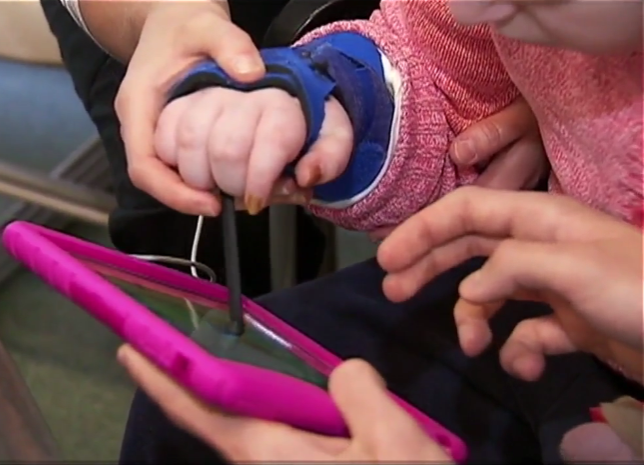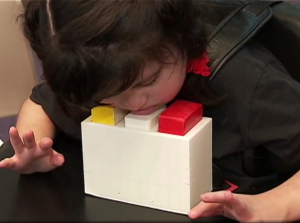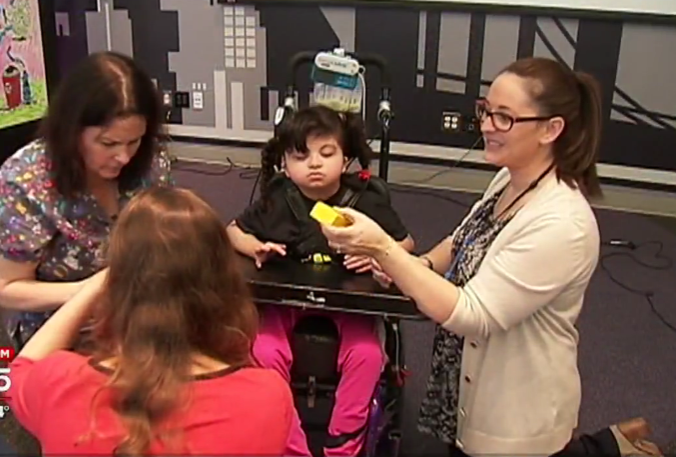 In western Long Island, New York, off the shores of Little Neck Bay, is St. Mary’s Hospital for Children. It’s a place of healing, comfort and rehabilitation for children with complex and often chronic conditions that interfere with their quality of life. According to the hospital’s website, their mission is to “help kids be kids,” which they do through a combination of recreational activities plus therapy and treatment. They’ve also recently received some help from a local high school, which is using 3D printing to help some of those kids to develop important skills and gain some independence.
In western Long Island, New York, off the shores of Little Neck Bay, is St. Mary’s Hospital for Children. It’s a place of healing, comfort and rehabilitation for children with complex and often chronic conditions that interfere with their quality of life. According to the hospital’s website, their mission is to “help kids be kids,” which they do through a combination of recreational activities plus therapy and treatment. They’ve also recently received some help from a local high school, which is using 3D printing to help some of those kids to develop important skills and gain some independence.
Lynbrook High School’s Advanced Design and Innovation Class is studying 3D printing, and they’re using it in one of the most important ways that the technology can be: to design adaptive and assistive devices for children, namely the children at St. Mary’s Hospital. Take Mary, for example. The 17-year-old has a condition that greatly limits the movement of her wrists, and thus limits the things she can do with her hands. Thanks to a 3D printed stylus designed by the Lynbrook High students, though, she can now use an iPad to learn and play games. While a stylus might seem like an easy design, it was a lot of work for the students, who needed to figure out a way for Mary to securely grasp it – which they did by adding a triangular piece which fits into her palm, where she can curl her fingers around it.
“We printed out many prototypes to figure out sizes and dimensions, and so it’s been a long process,” said Lynbrook senior Aleksandra Ratkiewicz. “I love designing, but to know that I can put it in real life practice and change someone’s life on a daily basis is incredible.”
In some cases, the children come up with their own ways to use the devices – ways that the designers didn’t necessarily envision, but that work just as well or better. One young girl was presented with a toy intended to develop her cognitive skills by helping her to understand cause and effect. The toy consists of three blocks that can be raised and lowered by pressing down on them alternately – which the girl decided to do with her chin rather than her hands, but which still improved her cognitive skills and coordination.
 The class is taught by Paul Rotstein, a technology education teacher at Lynbrook High. He’s pleased with the way the course has gone, not only for his students but for the kids they are helping. The designs give them independence, he says, allowing them to use their iPads or speech devices without assistance for the first time. In some cases, the 3D printed toys and games serve another purpose: to comfort and distract the children while they are undergoing difficult treatments.
The class is taught by Paul Rotstein, a technology education teacher at Lynbrook High. He’s pleased with the way the course has gone, not only for his students but for the kids they are helping. The designs give them independence, he says, allowing them to use their iPads or speech devices without assistance for the first time. In some cases, the 3D printed toys and games serve another purpose: to comfort and distract the children while they are undergoing difficult treatments.
“To stimulate them mentally with a puzzle, I felt like it was tagging on two fronts,” says student Michael K. Deegan, who created a 3D printed puzzle for the kids to work on while stuck in treatment. “It’s such a joy, and it’s such a pleasure to see them be able to apply something I’ve designed into their lives.”
Projects like this one are a wonderful way to engage students in 3D printing – and maybe point them towards careers using the technology to help others. It’s one thing to teach 3D printing in the classroom, but to have students use it for real-life applications that directly show them the difference the technology can make in people’s lives is much more impactful – on them, on the people they’e already helped, and those they may help in the future. What are your thoughts on this project? Discuss in the 3D Printed Pediatric Adaptive Devices forum over at 3DPB.com.
[Source: Fox5NY]Subscribe to Our Email Newsletter
Stay up-to-date on all the latest news from the 3D printing industry and receive information and offers from third party vendors.
You May Also Like
3D Printing Unpeeled: New Arkema Material for HP, Saddle and Macro MEMS
A new Arkema material for MJF is said to reduce costs per part by up to 25% and have an 85% reusability ratio. HP 3D HR PA 12 S has been...
3D Printing News Briefs, January 20, 2024: FDM, LPBF, Underwater 3D Printer, Racing, & More
We’re starting off with a process certification in today’s 3D Printing News Briefs, and then moving on to research about solute trapping, laser powder bed fusion, and then moving on...
3D Printing Webinar and Event Roundup: December 3, 2023
We’ve got plenty of events and webinars coming up for you this week! Quickparts is having a Manufacturing Roadshow, America Makes is holding a Member Town Hall, Stratafest makes two...
Formnext 2023 Day Three: Slam Dunk
I’m high—high on trade show. I’ve met numerous new faces and reconnected with old friends, creating an absolutely wonderful atmosphere. The excitement is palpable over several emerging developments. The high...

































